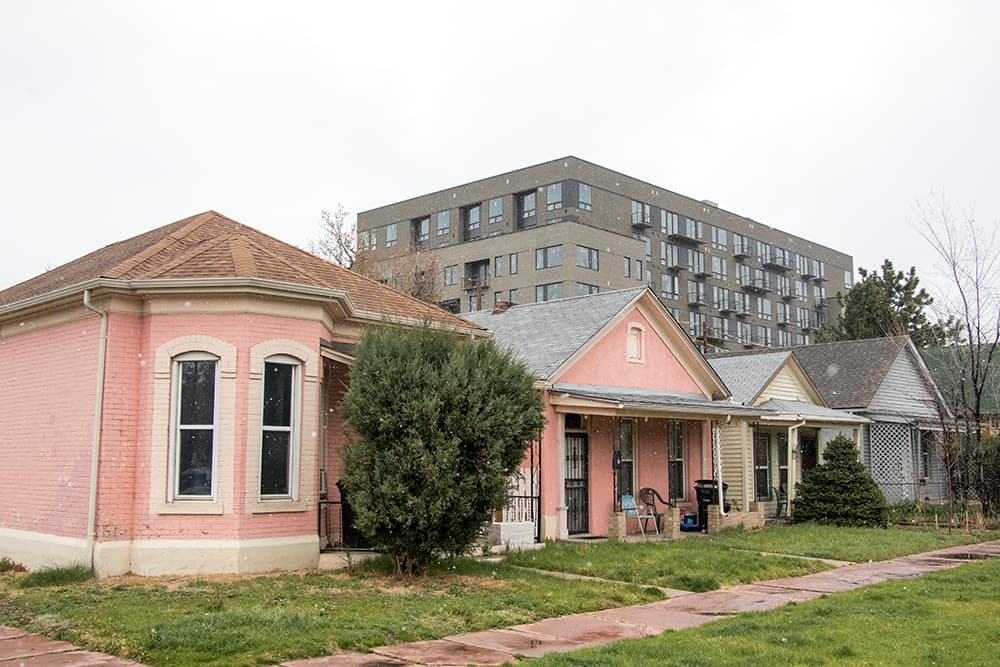
The neighbors knew it would be a long shot.
They had seen blocky new houses and apartments cramming onto the blocks of other neighborhoods. They thought that their corner of Five Points would be next -- and they saw a way to stop it.
"We kept telling ourself, 'This may not work, but at least we’ll get to know our neighbors,'" Robbie Hobein told the Denver City Council.
On Monday night, she and her friends achieved their goal, along with an alliance of the people they've met over the last two years: The Denver City Council voted unanimously to rezone about 100 properties around 25th and Glenarm, a change that will limit the area's redevelopment.
"You guys are going to be giving clinics all over the city," said Council President Albus Brooks, who sponsored the bill. The supporters saw it as a way to preserve the character and affordability of their home, while others said it would unnecessarily limit development in an urban area.
They call it The Little Triangle.
Or at least that's how Hobein and her neighbors refer to these blocks of smaller single-family houses, many dating back to the 1800s, just east of downtown.
"There are a lot of single-family homes that are still there. We are constantly seeing these cannibalized," said Keith Pryor, a speaker on Monday night.
Neighborhoods like theirs are a tempting site for developers and affluent homebuyers. Sometimes the homes are torn down and replaced -- with one project infamously causing the collapse of a neighbor's wall. Often, a new owner might only keep the first-floor facade of a home. At one point, a developer proposed a sizable new apartment block.
In 2010, city officials had designated the area as appropriate for three-story multi-use development, a status that has kept the door open for slot homes and intense development in the neighborhood.
"It’s a minor miracle that it has not radically transformed," said Councilman Rafael Espinoza, who thinks that the new designation has had "atrocious" effects elsewhere in the city.

The new rezoning makes a few significant changes.
First, it largely eliminates the possibility of building apartments in the area, though it still allows for duplexes and row-homes. The change also limits buildings to 2.5 floors, shrinking the height limit from 40 feet to 30 or 35 feet.
Achieving that change took two and a half years of work, including knocking on nearly every door in the neighborhood and tracking down the absentee landlords who own about half the lots. The organizers argued that the change would bring the neighborhood in line with plans for the area -- and, moreover, they tapped into simmering anger at the pace of development.
"A few older ladies said, 'I'm sick of developers knocking on my door and trying to buy my property out from under me,'" said Maggie Miller, a resident who helped organize the change. (She and Hobein also credited Deb Jacobson as an organizer)
"As we talked to more and more people, for me what emerged was just this growing appreciation for the diversity of housing stock and the diversity of people."

Some people hated the idea.
Several questioned whether it would hurt their property values or limit their ability to redevelop. One speaker on Monday, Samuel Hargraves, argued that it was an unnecessary new limit.
"We are not blocks of quaint, single-story Victorians. We are not Curtis Park," he said, noting that large structures had already sept into the area. Buildings alongside the Little Triangle are allowed to rise as high as five, eight or even 30 floors. Hargraves also asked whether it was wise to limit development barely a block from the 25th and Welton rail station.
But others fought back against the idea that it was a "downzoning," saying developers could still fit new buildings, and in some cases multiple units, onto the lots.
"Density is not the right to a big house," said Councilwoman At-large Robin Kniech. "Density is about fitting more people or households into an area. You can’t even tell me you’ll get fewer bedrooms."
In an interview, though, Espinoza said that in some cases the change would limit unit density by eliminating apartment building opportunities.
"You definitely lose the ability to acquire a bunch of those small homes and build a substantial apartment building, which would be considerably more units per acre than a rowhomes," said Espinoza.
He supported the change because he felt it would stop new buildings from overshadowing the eclectic mix of brick houses and bungalows. (It's also worth noting that the earlier 2010 change also reduced the potential height of buildings in the area.)
"What that zoning says is, 'You cannot come in and build a 40-foot high box ... three stories tall with a doghouse on top, where everyone's overlooking all those old houses," he said. "It gets oppressive for people living in their houses."
Pryor argued that the change would keep property values lower by discouraging redevelopment to a degree. Previously, he said, people were "buying the land underneath the house."
Still, it seems unlikely that houses in the area will drop significantly in price. One homeowner paid $675,000 for a property on Glenarm Place in 2015, according to property records.











